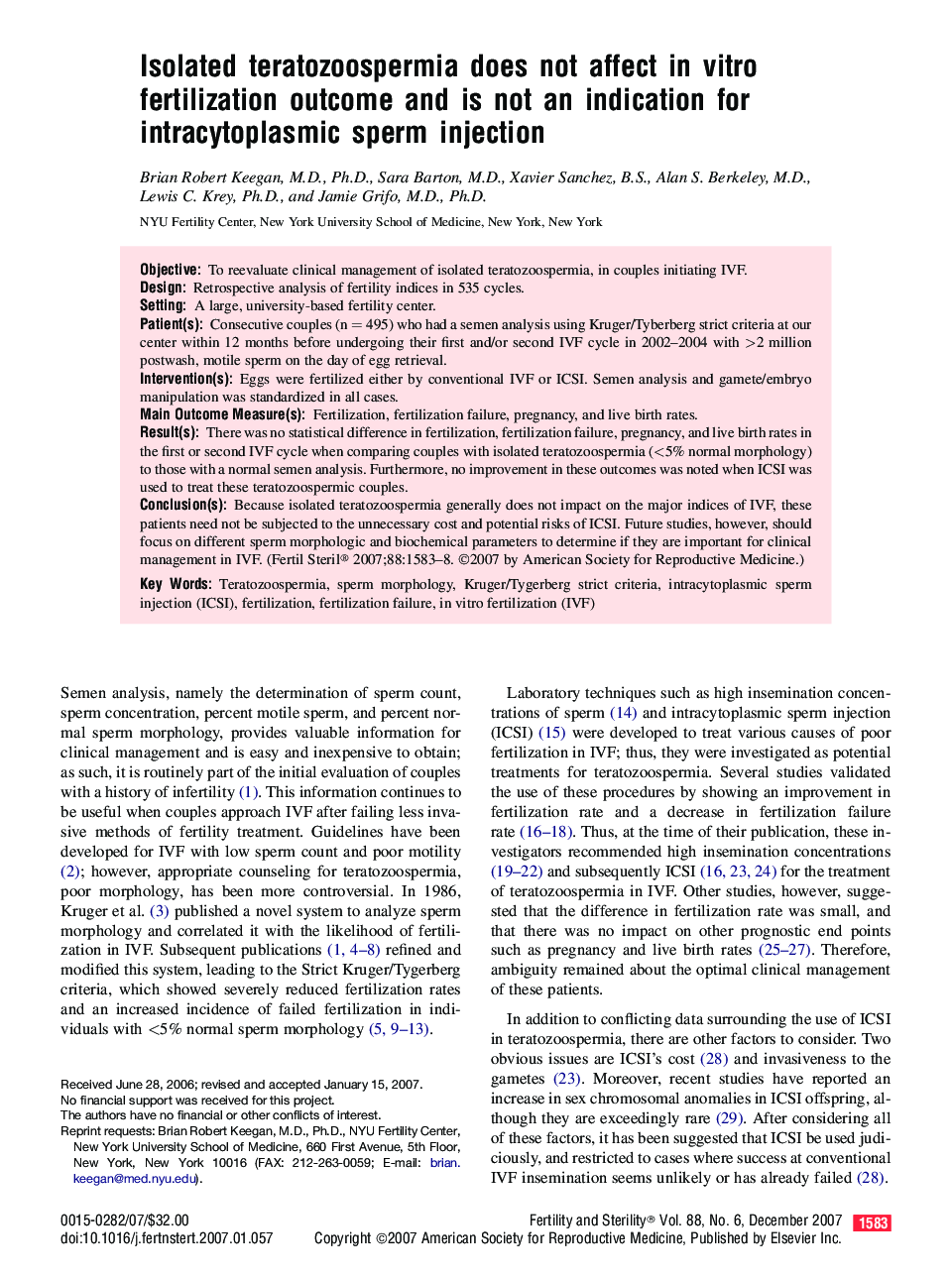| Article ID | Journal | Published Year | Pages | File Type |
|---|---|---|---|---|
| 3935242 | Fertility and Sterility | 2007 | 6 Pages |
ObjectiveTo reevaluate clinical management of isolated teratozoospermia, in couples initiating IVF.DesignRetrospective analysis of fertility indices in 535 cycles.SettingA large, university-based fertility center.Patient(s)Consecutive couples (n = 495) who had a semen analysis using Kruger/Tyberberg strict criteria at our center within 12 months before undergoing their first and/or second IVF cycle in 2002–2004 with >2 million postwash, motile sperm on the day of egg retrieval.Intervention(s)Eggs were fertilized either by conventional IVF or ICSI. Semen analysis and gamete/embryo manipulation was standardized in all cases.Main Outcome Measure(s)Fertilization, fertilization failure, pregnancy, and live birth rates.Result(s)There was no statistical difference in fertilization, fertilization failure, pregnancy, and live birth rates in the first or second IVF cycle when comparing couples with isolated teratozoospermia (<5% normal morphology) to those with a normal semen analysis. Furthermore, no improvement in these outcomes was noted when ICSI was used to treat these teratozoospermic couples.Conclusion(s)Because isolated teratozoospermia generally does not impact on the major indices of IVF, these patients need not be subjected to the unnecessary cost and potential risks of ICSI. Future studies, however, should focus on different sperm morphologic and biochemical parameters to determine if they are important for clinical management in IVF.
